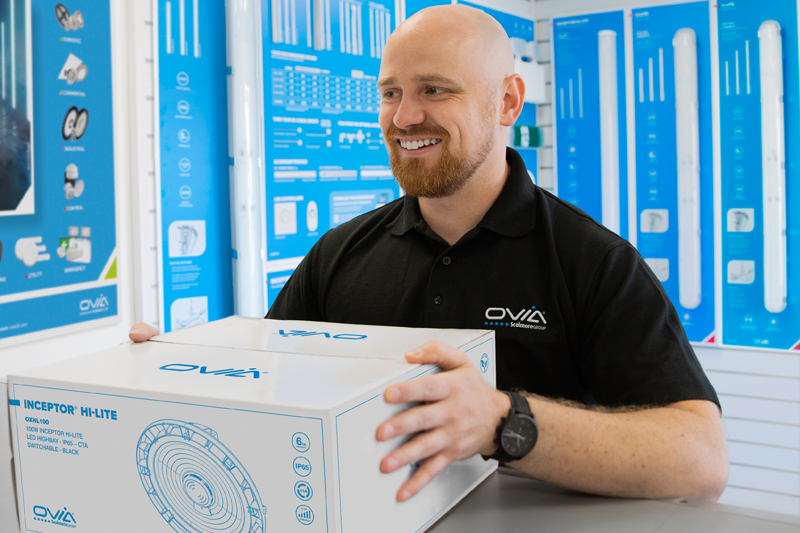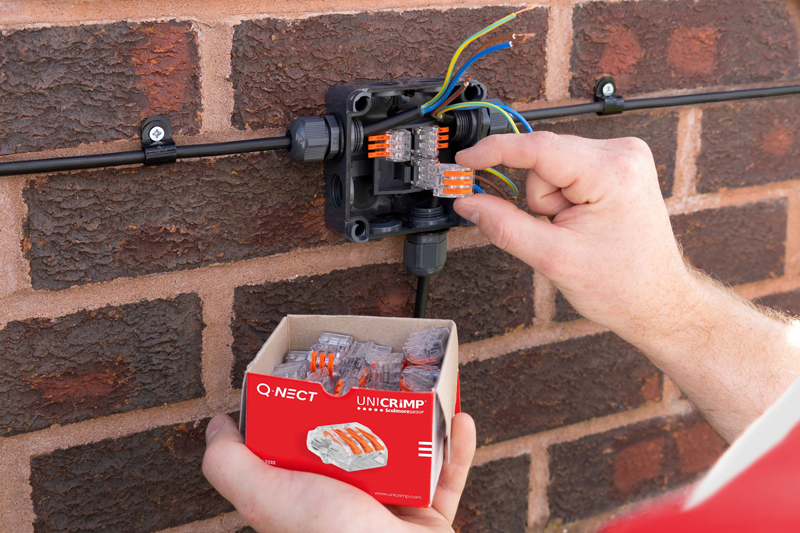Mike Collins, Managing Director at Ovia, shines a light on some of the issues facing electrical wholesalers and how Ovia is helping to mitigate those challenges.
The lighting industry continues to evolve rapidly, driven by shifting technologies, regulatory updates and market pressures. At Ovia, we recognise that our wholesaler partners face daily challenges in maintaining competitiveness and delivering value to contractors, specifiers and end-users.
Product proliferation and complexity
The transition to LED, connected lighting and increasingly sophisticated control systems has expanded product offerings dramatically. Wholesalers now manage more SKUs, often with highly technical specifications, while customers expect instant product knowledge.
Prices for panels, battens, downlights and basic floodlights have dropped significantly over the past 5–7 years and the commoditisation of LED lighting has led to increased competition from brands on price with near-identical specifications, eroding differentiation.
Price competition
There is intense competition from online sellers and direct imports, and market saturation. Contractors and facilities managers now price-check online, putting pressure on wholesalers, requiring them to differentiate beyond pricing alone.
Supply chain pressures
Global supply chain volatility, fluctuating demand and long lead times can leave wholesalers struggling to maintain the right stock levels while controlling costs.
Digital expectations
Contractors increasingly expect online ordering, instant stock visibility and digital tools for quoting and submittals, pushing wholesalers to enhance their digital capabilities.
The value of a brand
In today’s competitive lighting industry, where technology rapidly evolves and prices fluctuate, a strong brand is one of the most valuable assets a lighting manufacturer can possess. Beyond logos and marketing slogans, a brand encapsulates trust, quality and a promise that customers rely on when choosing lighting solutions for their homes, businesses, or cities. A respected brand demonstrates consistent product quality, longer warranties and a proven track record.
Trust and reliability
Lighting is integral to safety, productivity and comfort. When customers select a lighting brand, they are not just purchasing a product; they are investing in reliability. A well-established brand assures architects, contractors and end-users that the luminaires will perform as promised, meet compliance standards and be supported with service throughout their lifecycle.
Ovia, a well-established brand following more than six successful years operating within the lighting industry, has the backing of Scolmore Group. As a family-run business for more than 36 years, the company is agile, able to make decisions quickly and react to market changes to continually deliver improved products and services. A sustained programme of reinvestment in the business infrastructure as well as its people, is what drives the business.
Differentiation in a crowded market
The lighting sector is saturated with manufacturers offering similar specifications and technology. A strong brand differentiates a manufacturer beyond technical data sheets, signalling design leadership, sustainability commitments and innovation.
A partnership with Ovia guarantees a range of high quality, value-for-money products backed up by excellent local stocks, next day delivery and outstanding customer service. We are committed to helping our customers sell our products and this is demonstrated through our proactive marketing effort, attendance and support for trade events and helping them make the most of the training opportunities we offer to ensure the end user gets the best possible products and solutions for the job.
Driving customer loyalty
In a field where product life cycles can span years, a brand is what keeps customers returning. Positive experiences with product quality, responsive support and consistent performance build emotional loyalty, turning customers into long-term partners rather than one-time buyers.

Find out more here
Find more industry feature articles here





